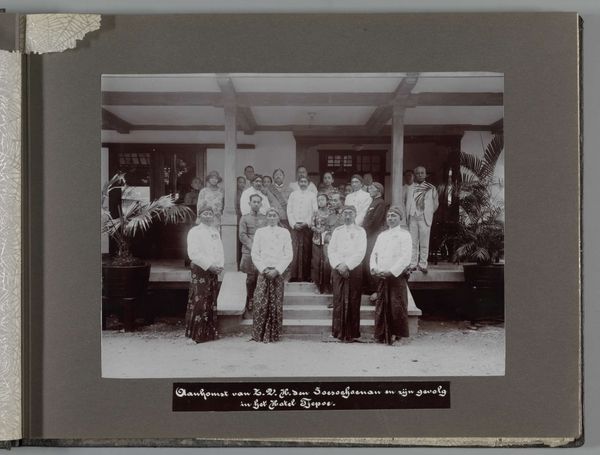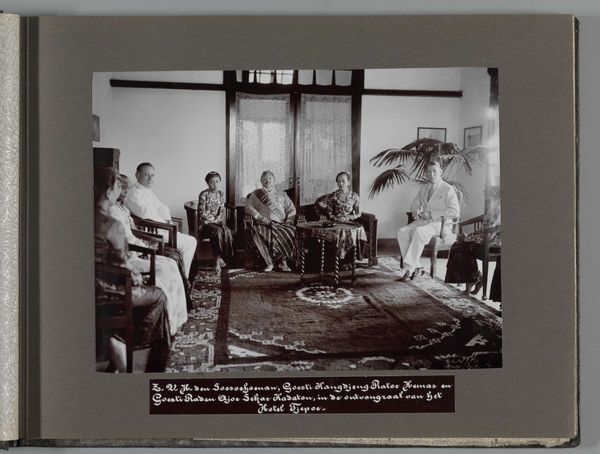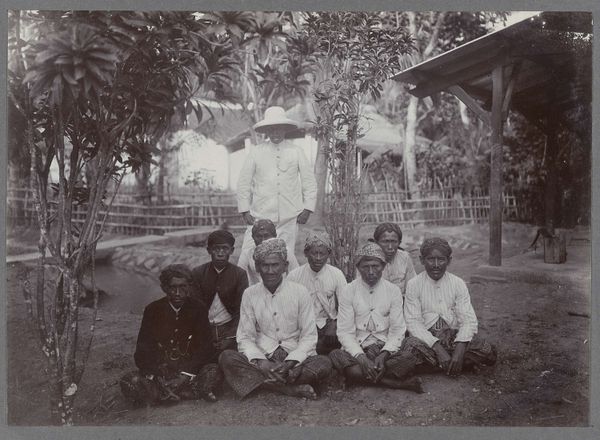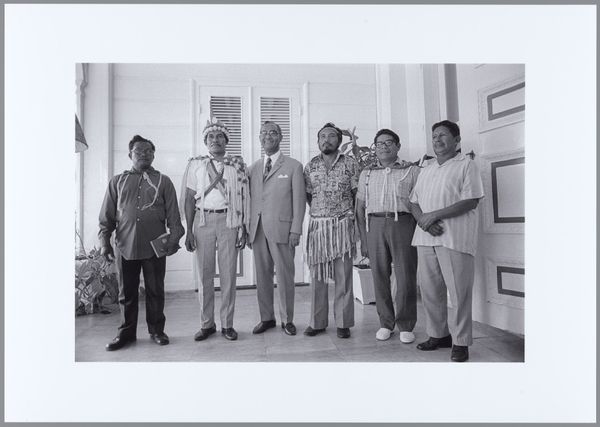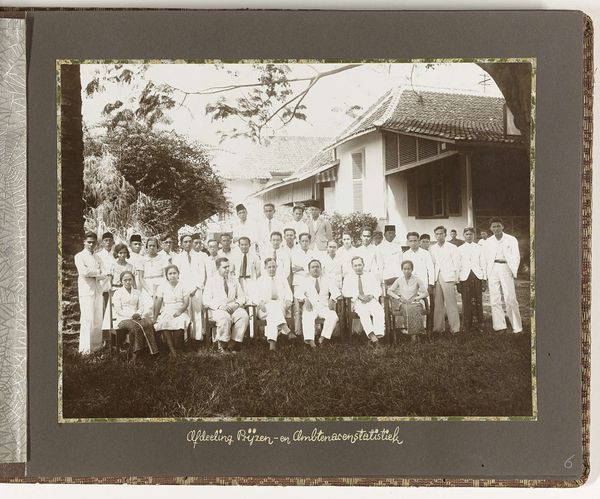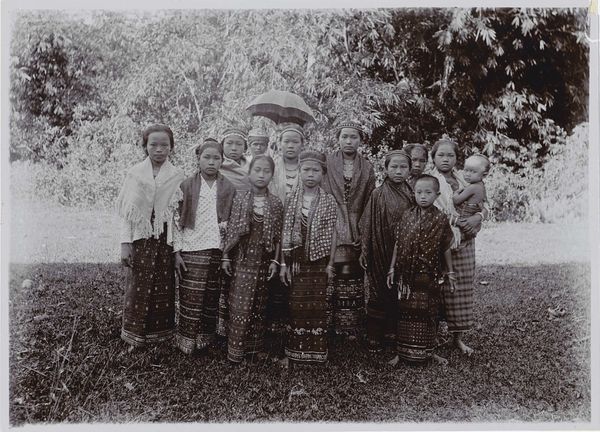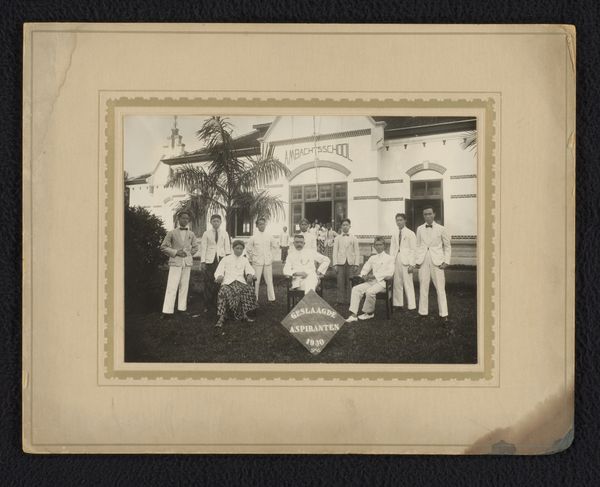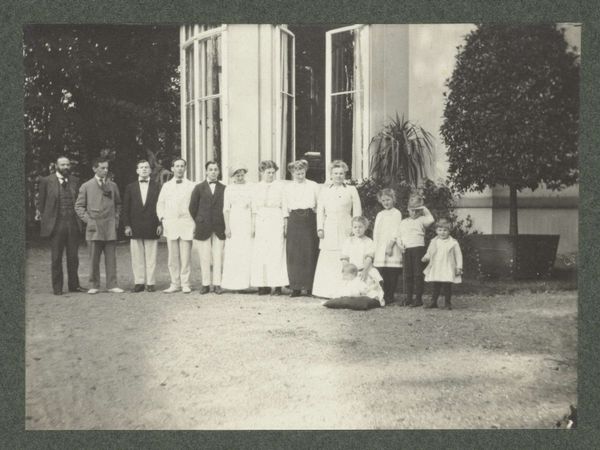
Aankomst van Z.V.H. den Soesoehoenan en zijn gevolg in de Kaboepaten van Toeban 1933
0:00
0:00
photography
#
portrait
#
asian-art
#
photography
#
paper medium
Dimensions: height 217 mm, width 285 mm
Copyright: Rijks Museum: Open Domain
Curator: Here we have a fascinating albumen print from 1933, titled "Aankomst van Z.V.H. den Soesoehoenan en zijn gevolg in de Kaboepaten van Toeban"—"The Arrival of His Majesty the Soesoehoenan and his Entourage in the Regencies of Tuban". Editor: It has such a stilted feel. The subjects are lined up on the steps of what seems to be a grand building, but their rigid poses convey a sense of imposed order rather than genuine celebration. The gray tones add to that subdued mood. Curator: Indeed, the composition is meticulously arranged. Notice how the architecture frames the figures, emphasizing the verticality of the columns which is then balanced by the horizontal spread of the group. This is classic early photographic portraiture: sharp focus, deep depth of field, and deliberate poses creating a staged tableau. Editor: The choice of framing certainly impacts the image. The building behind them suggests colonial power. I imagine this image was circulated as propaganda. It’s the colonial gaze presenting a staged reality for its own ends. These garments represent local traditions of Java, Indonesia, but are clearly juxtaposed in the framework of western influence. Curator: Consider, too, the tonal range—from the light garments of the dignitaries to the patterned skirts of those on the periphery. This play with light creates an impressive luminosity within the monochrome medium. Also, that tight focus and attention to texture within the limitations of photographic printing—really, it exemplifies the skill of the photographer. Editor: True, but technique and aesthetics shouldn’t overshadow the reality that this image also documents a moment of power and possible coercion. As a result, viewers in the modern era must view this photograph critically. There is power on display in how carefully subjects are placed and how controlled it appears, and understanding those forces should influence our viewing. Curator: Your points highlight that there’s always the question of intention versus reception, which makes this more rewarding to consider. Editor: Exactly, to me, analyzing images like these provides context about the local histories of Tuban—or Java, in general—during Dutch colonial rule. Curator: Yes, it gives us more than aesthetics—it offers complex histories to analyze for context. Editor: And that tension and visual push and pull that challenges us!
Comments
No comments
Be the first to comment and join the conversation on the ultimate creative platform.



